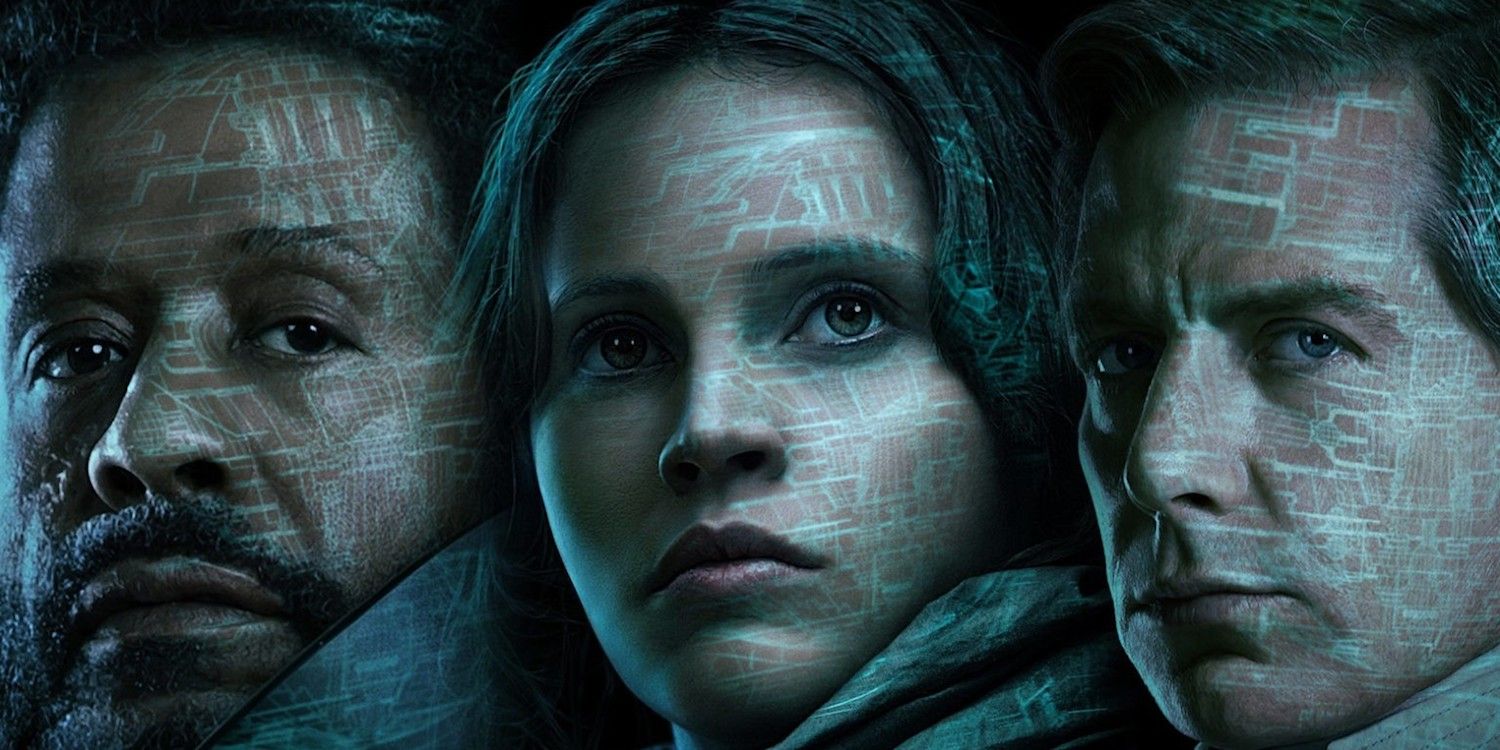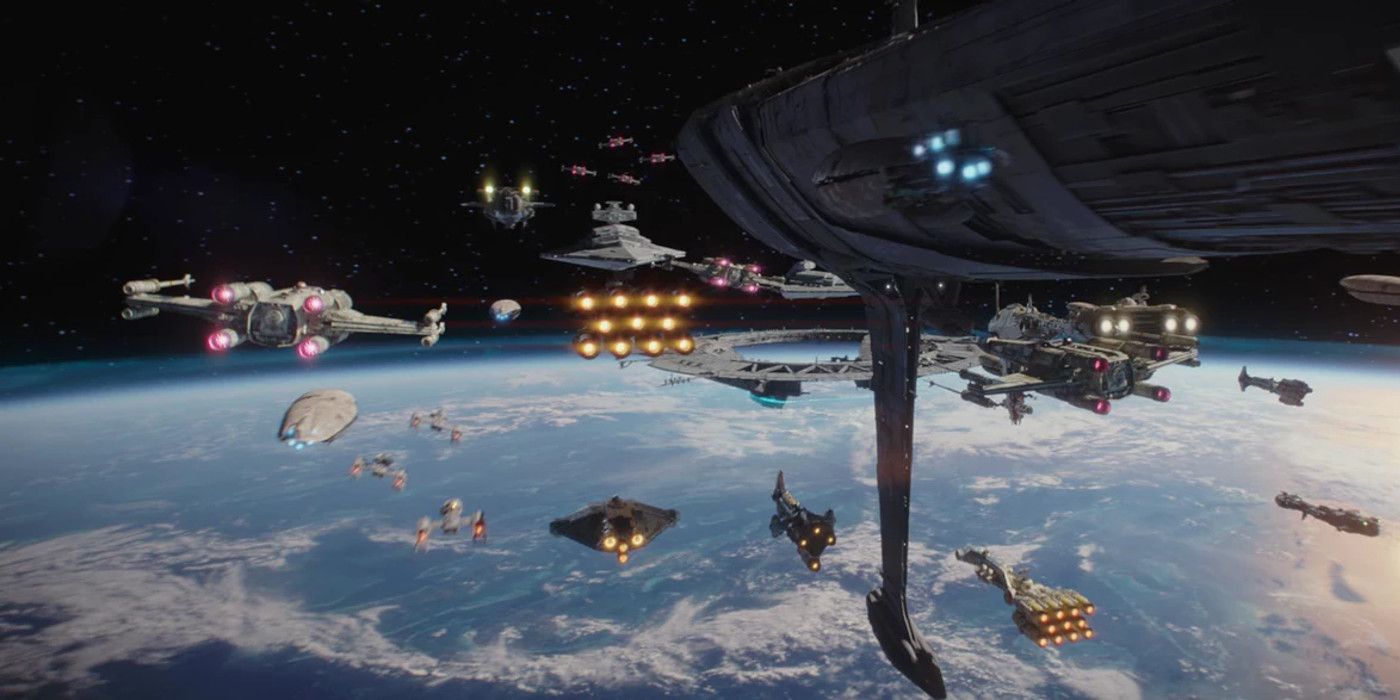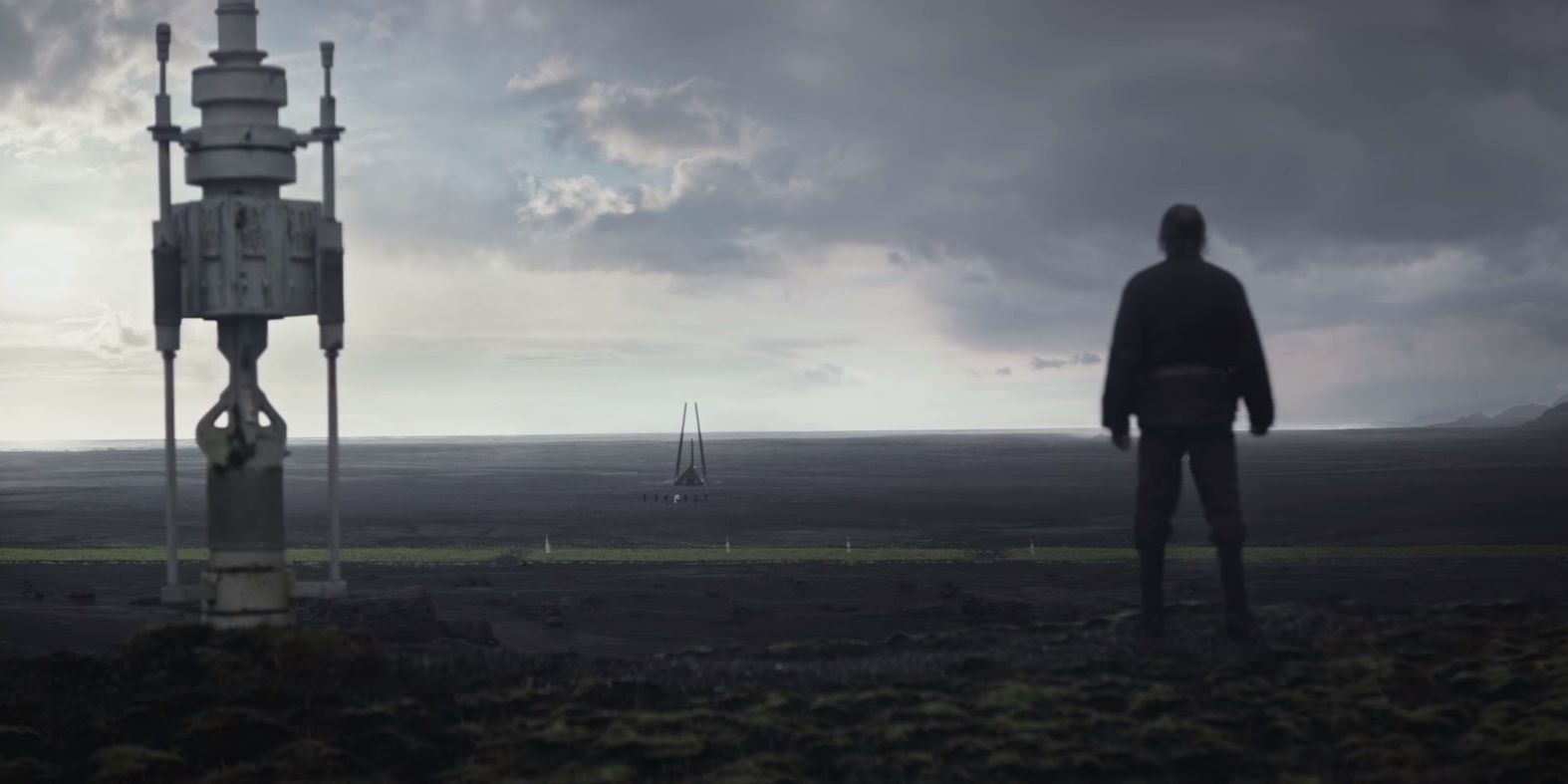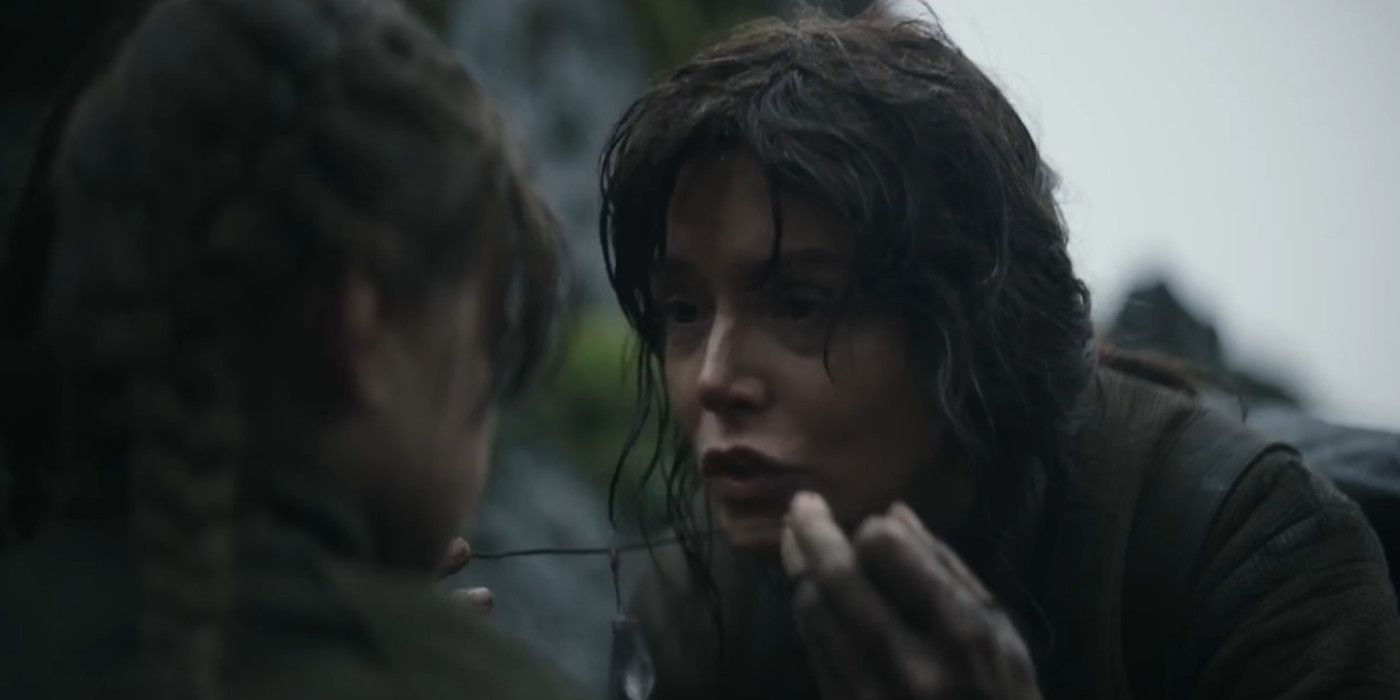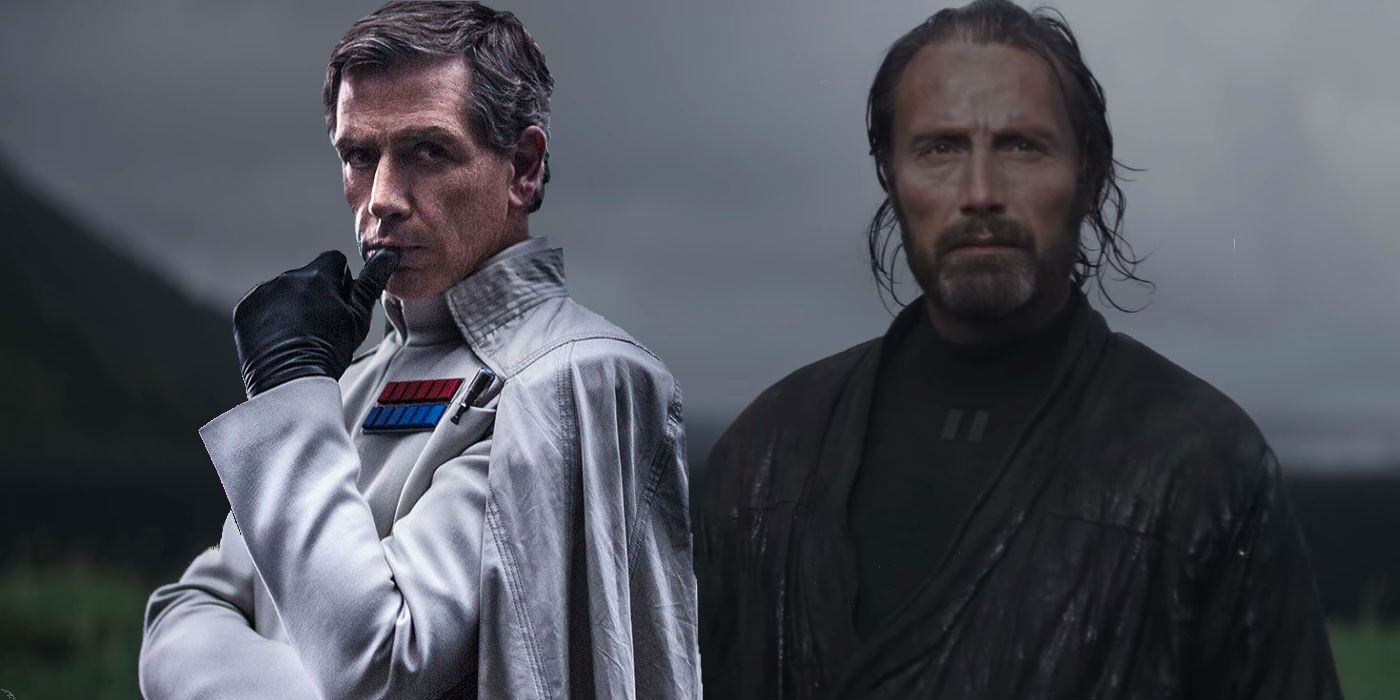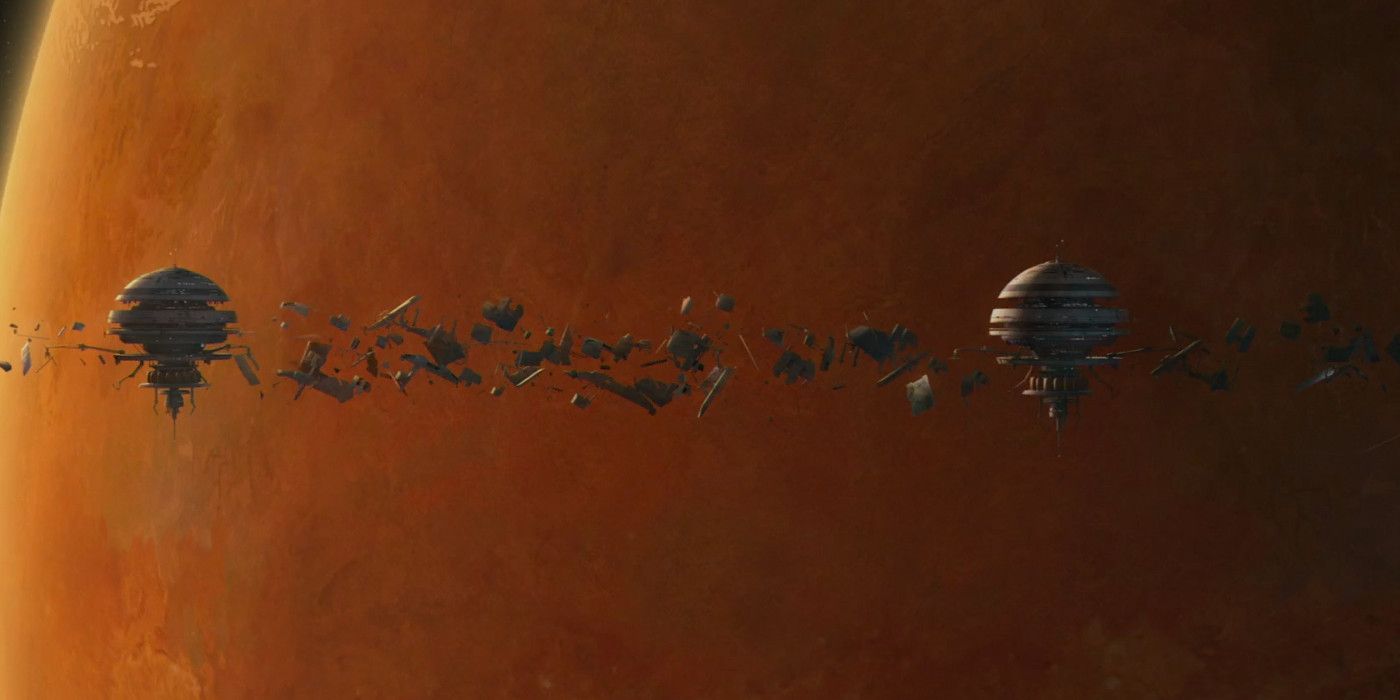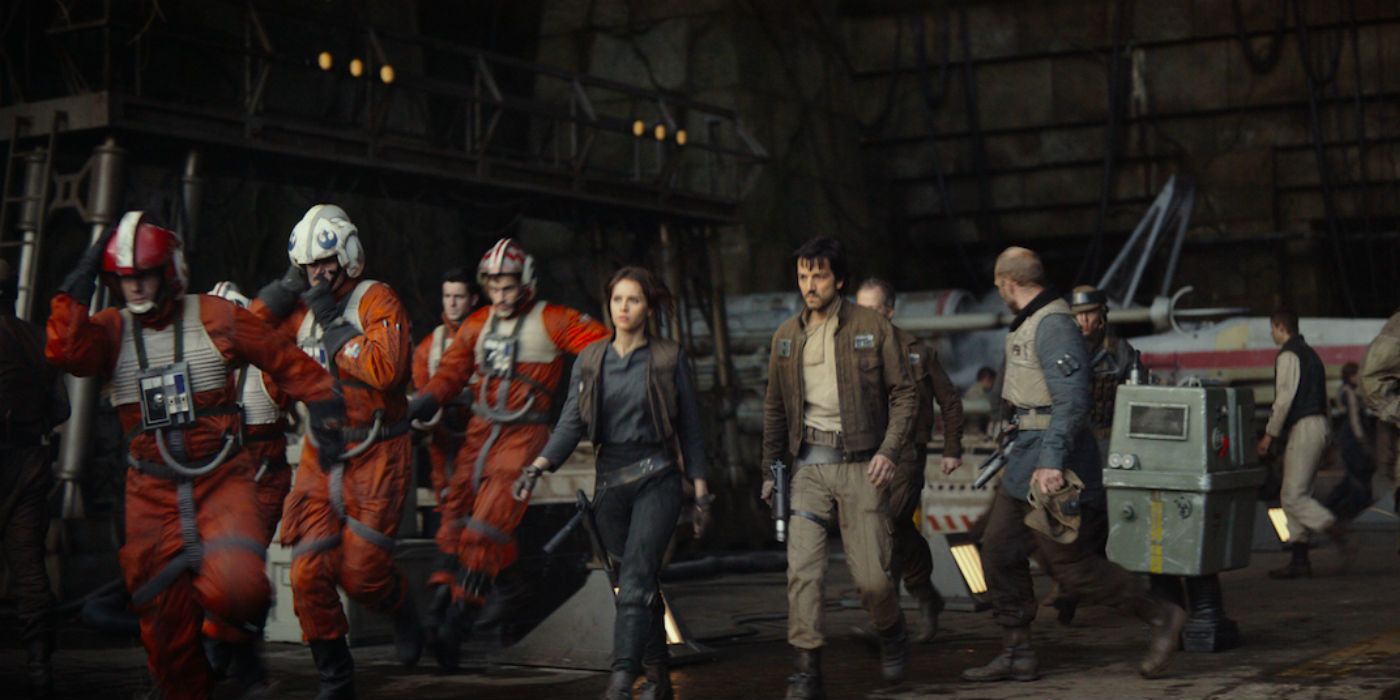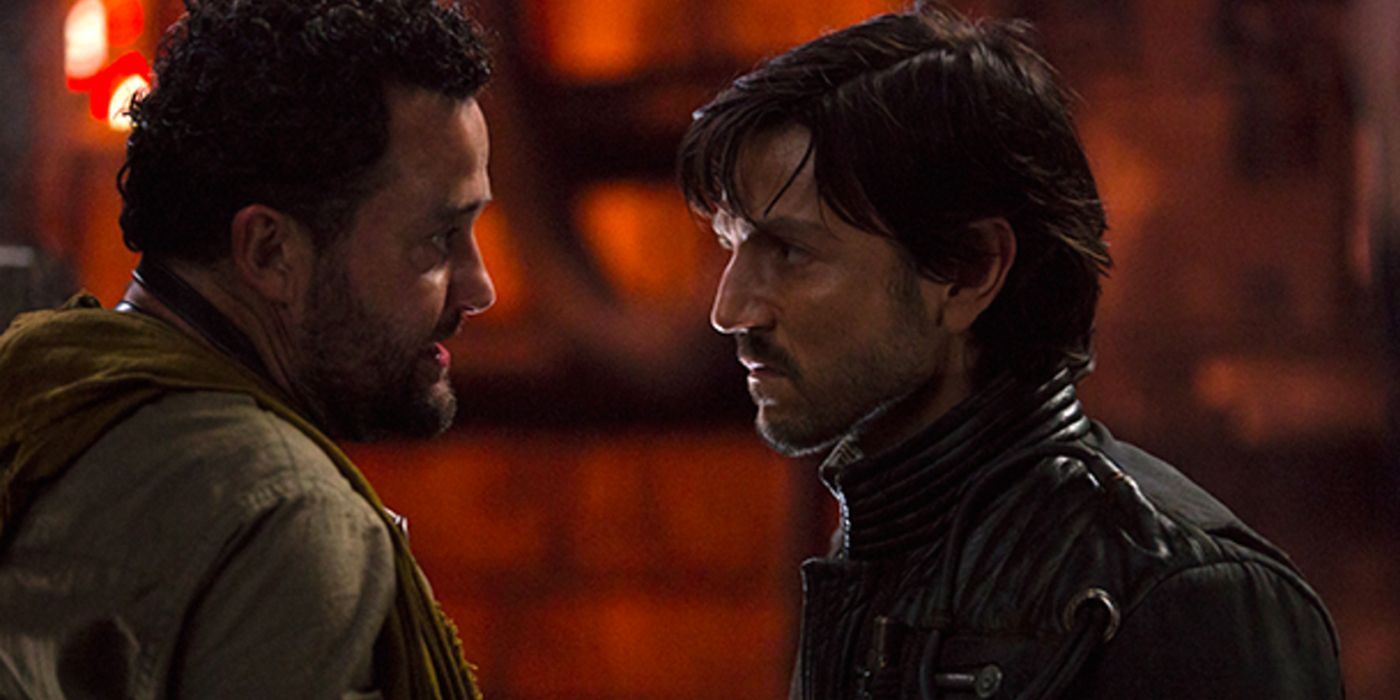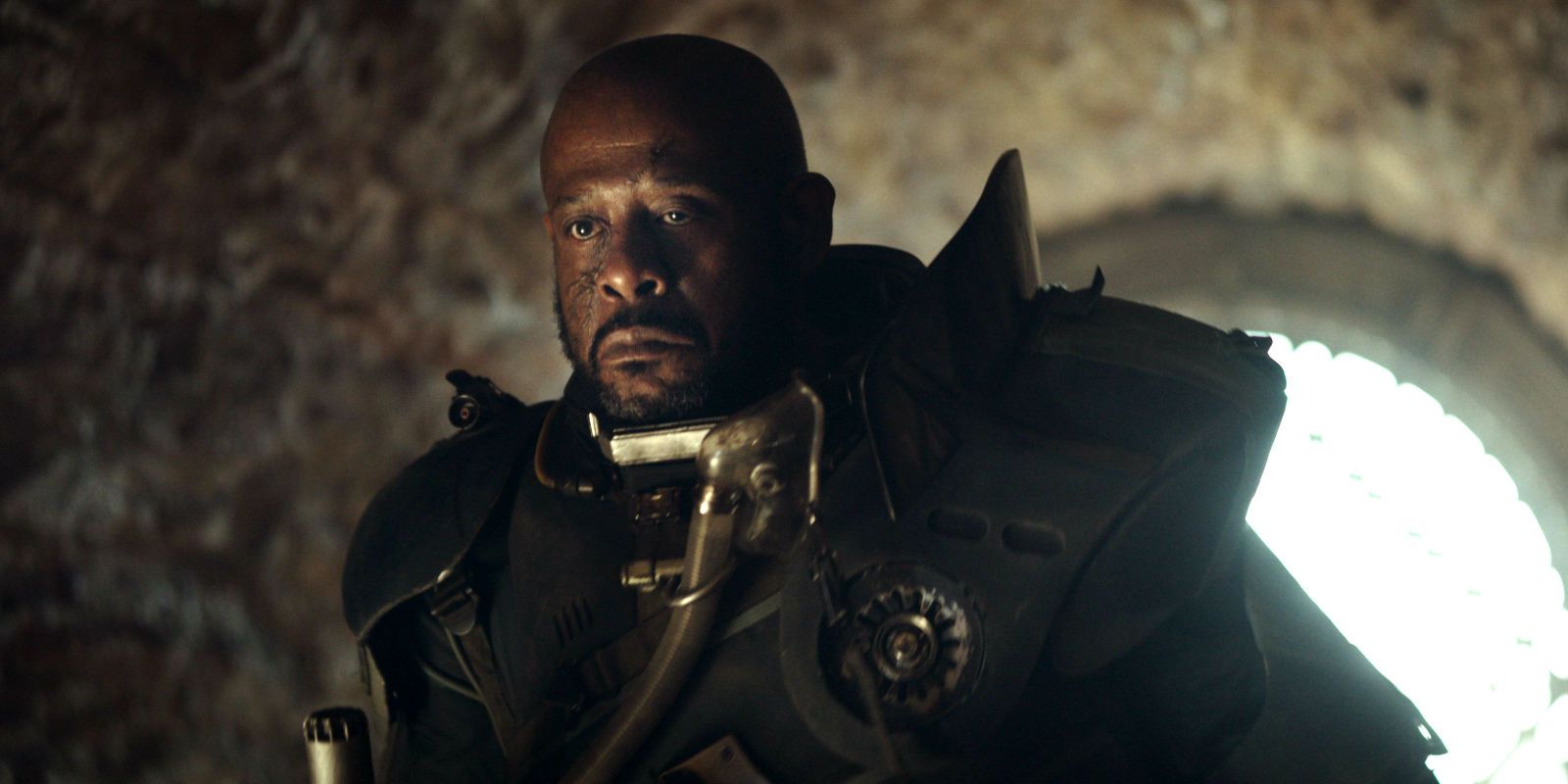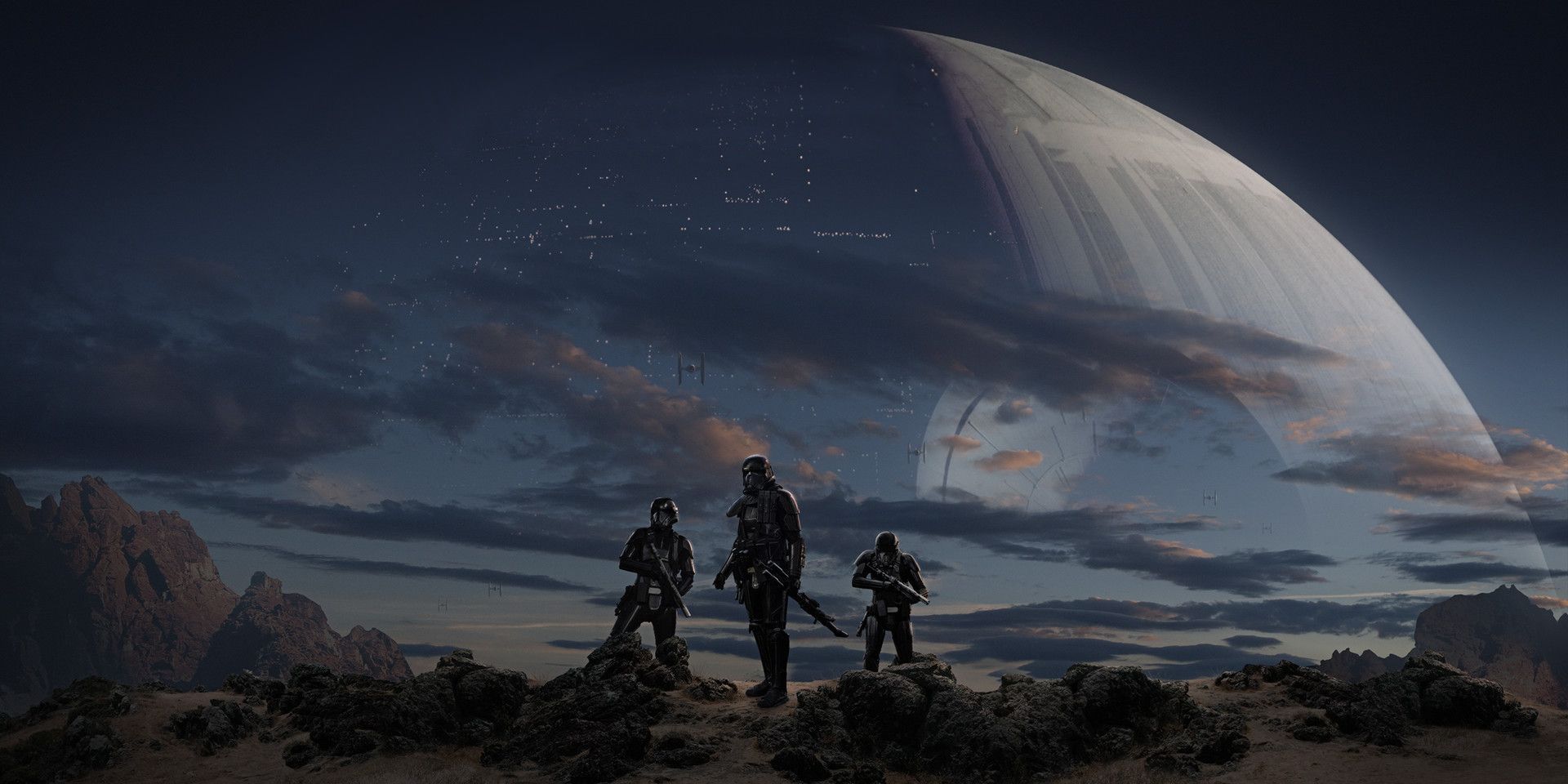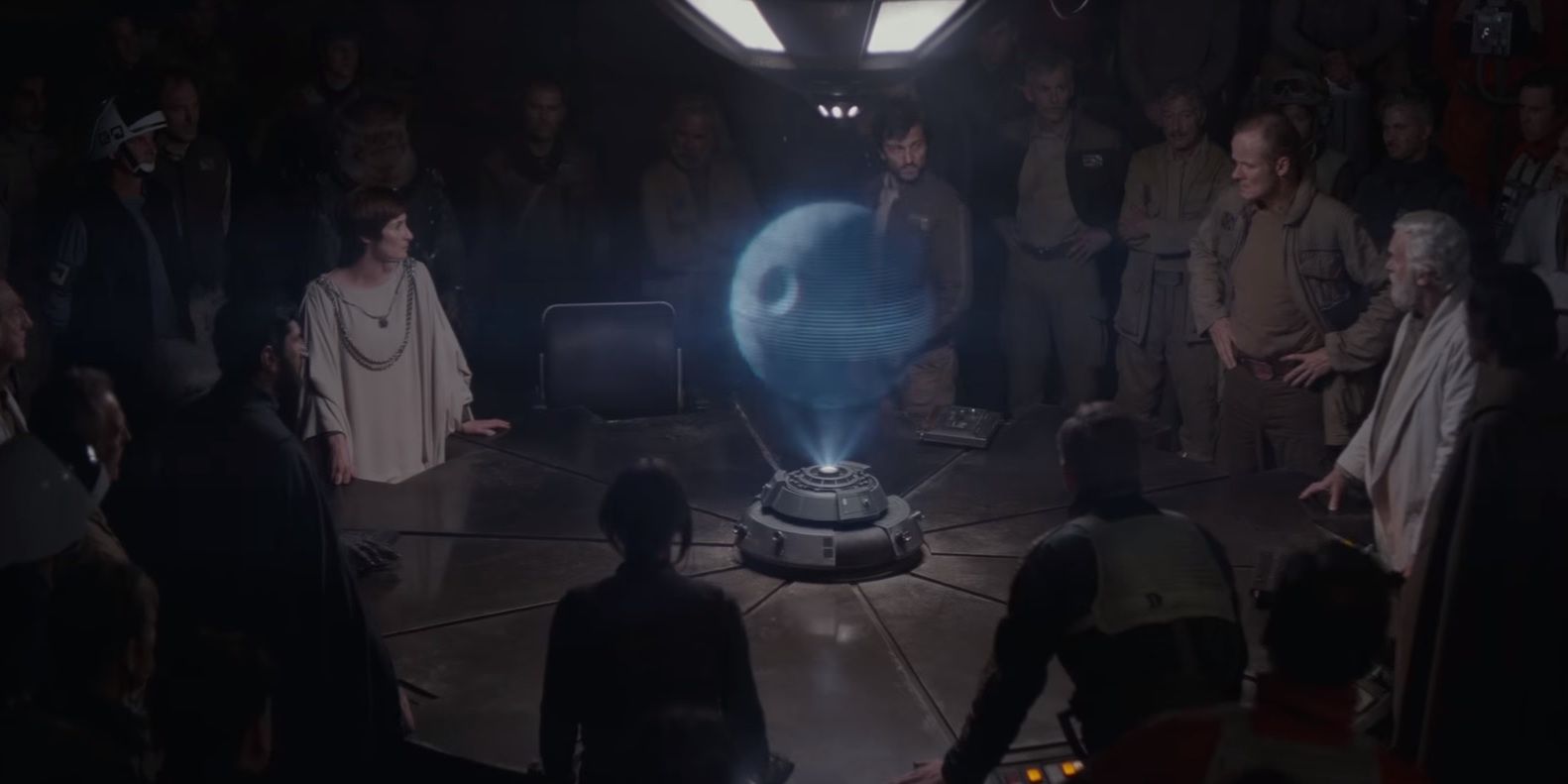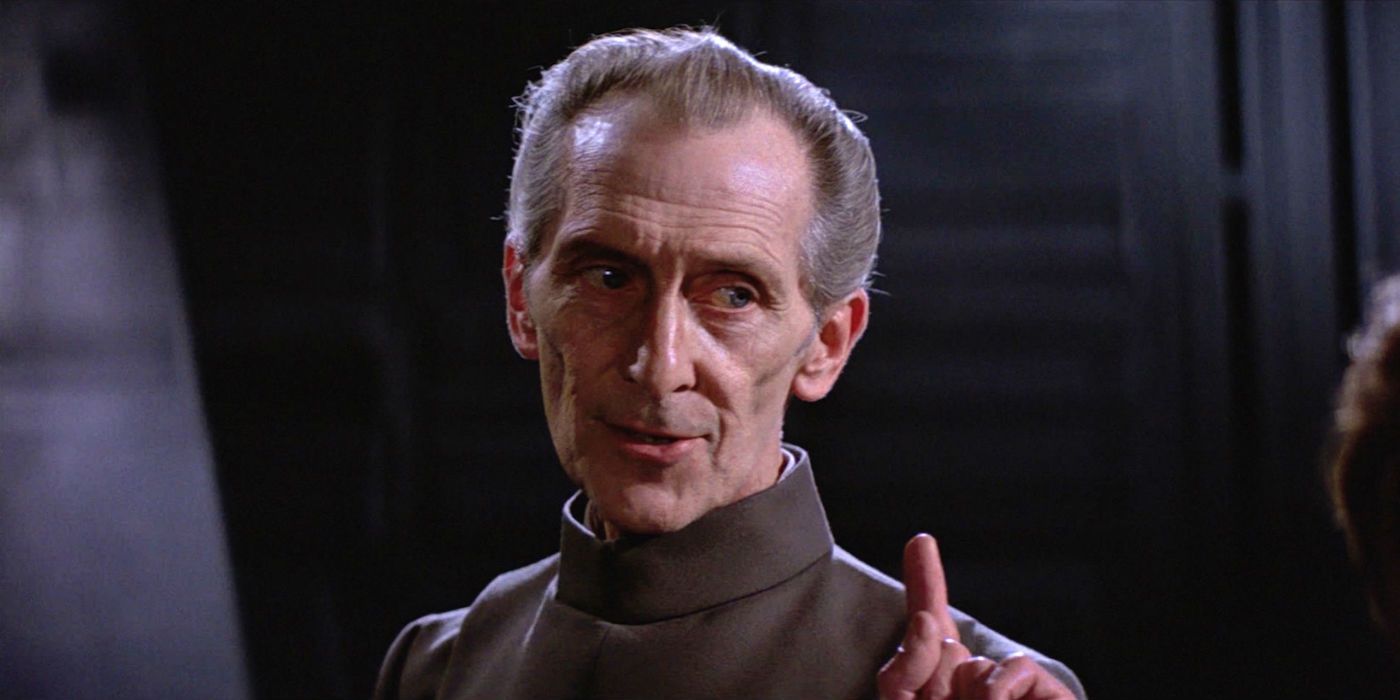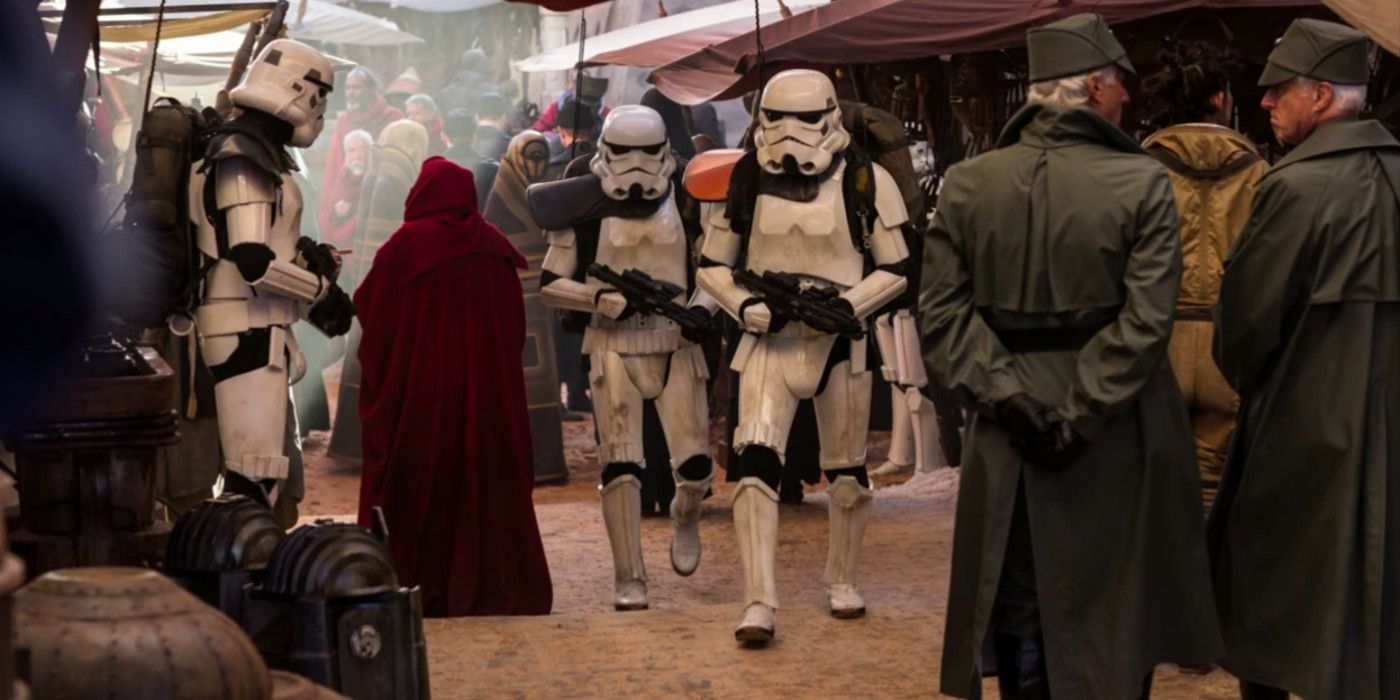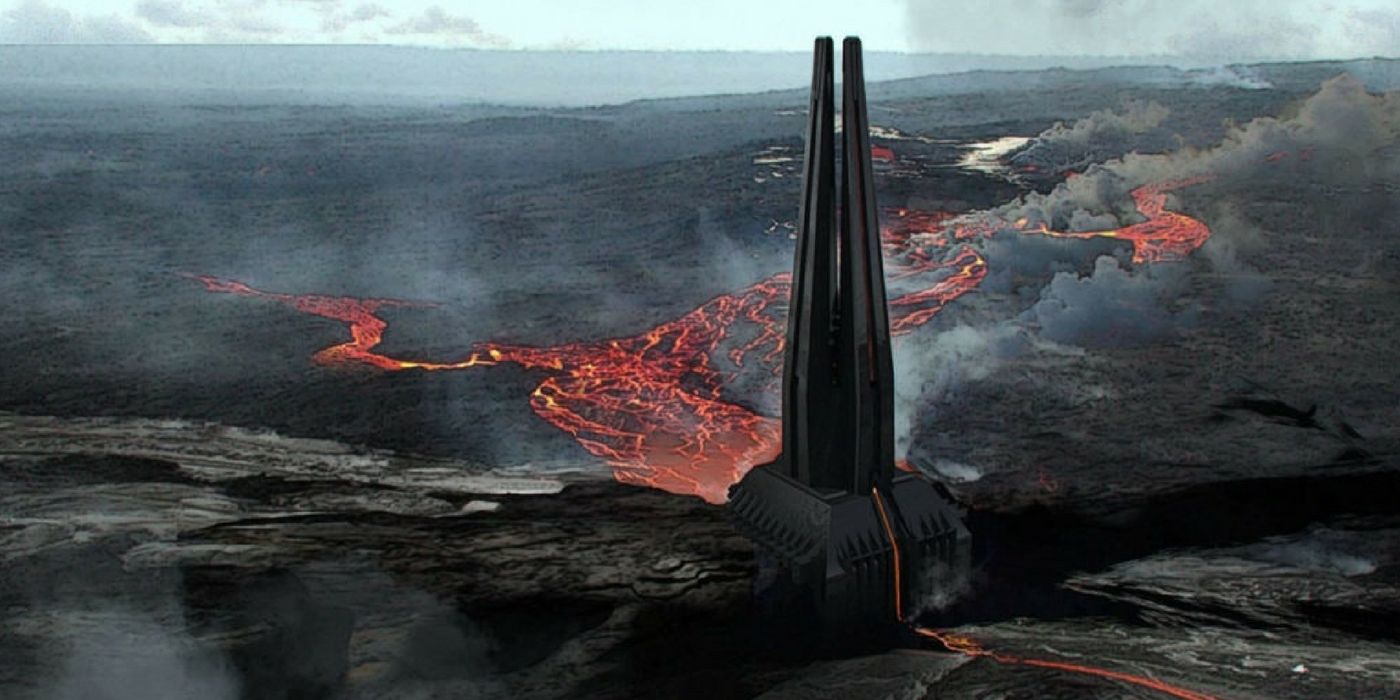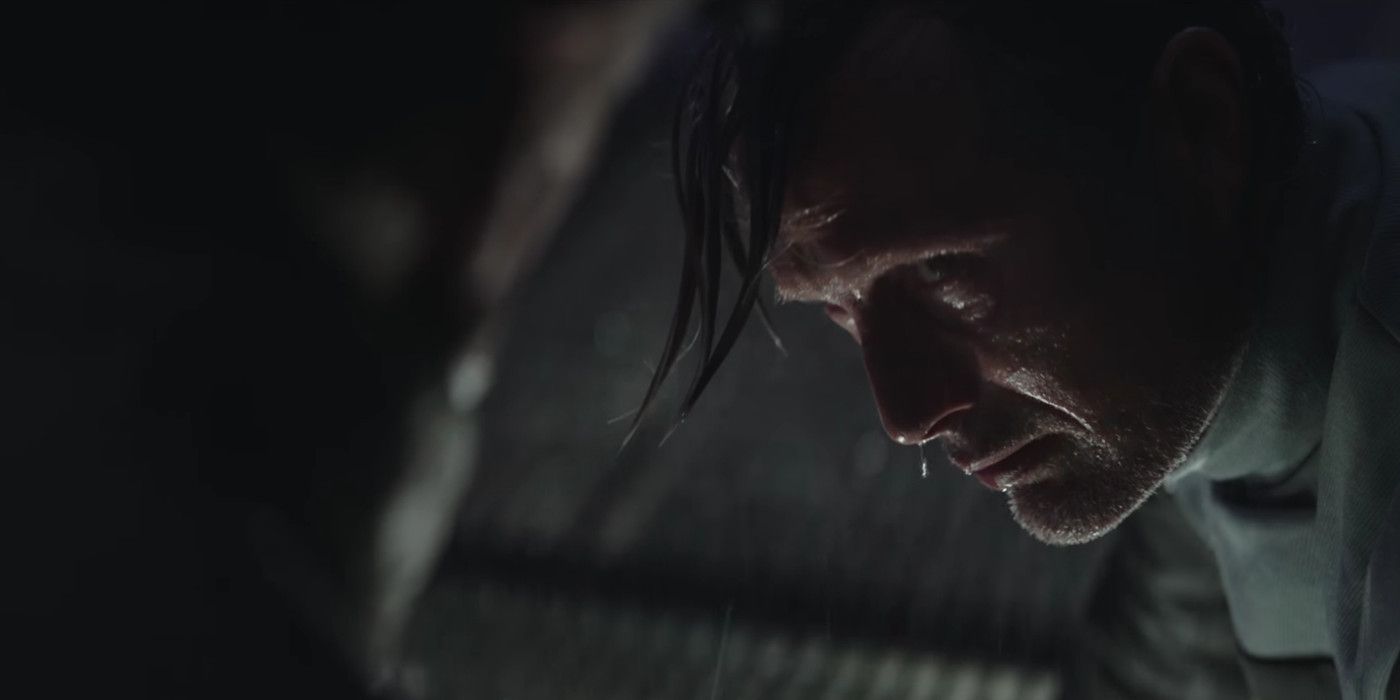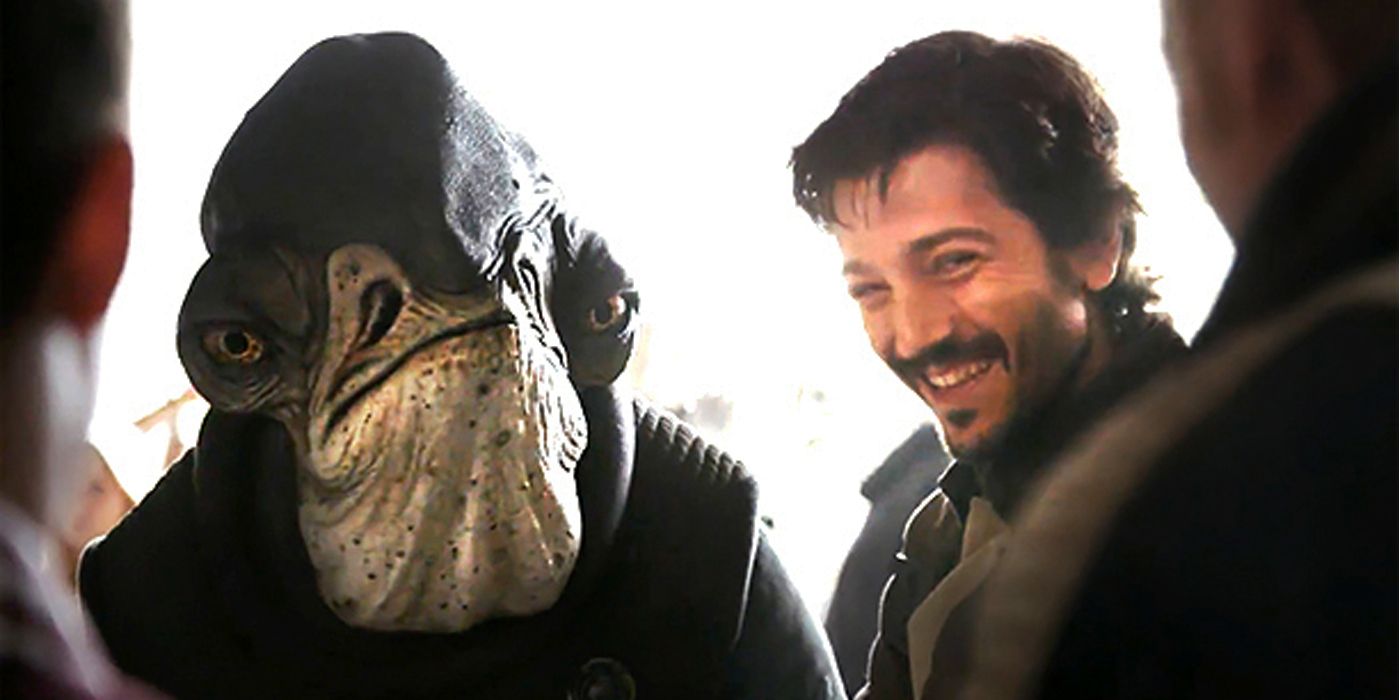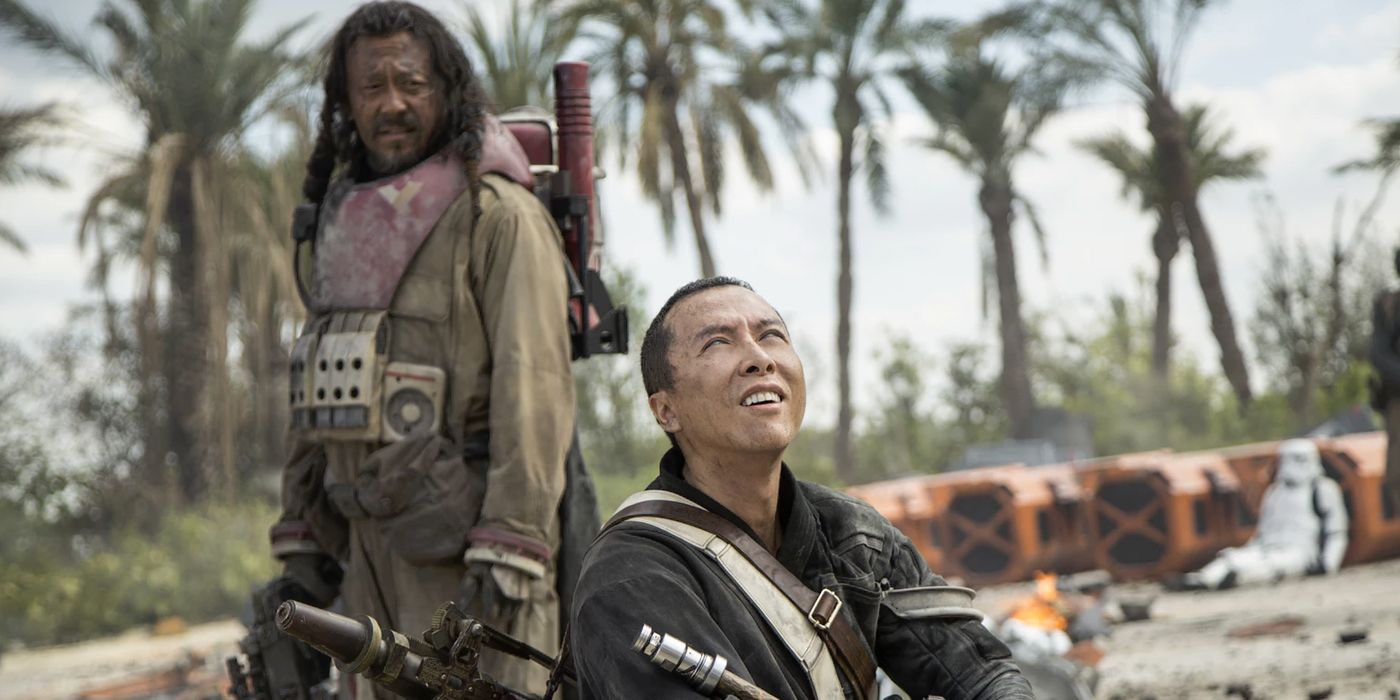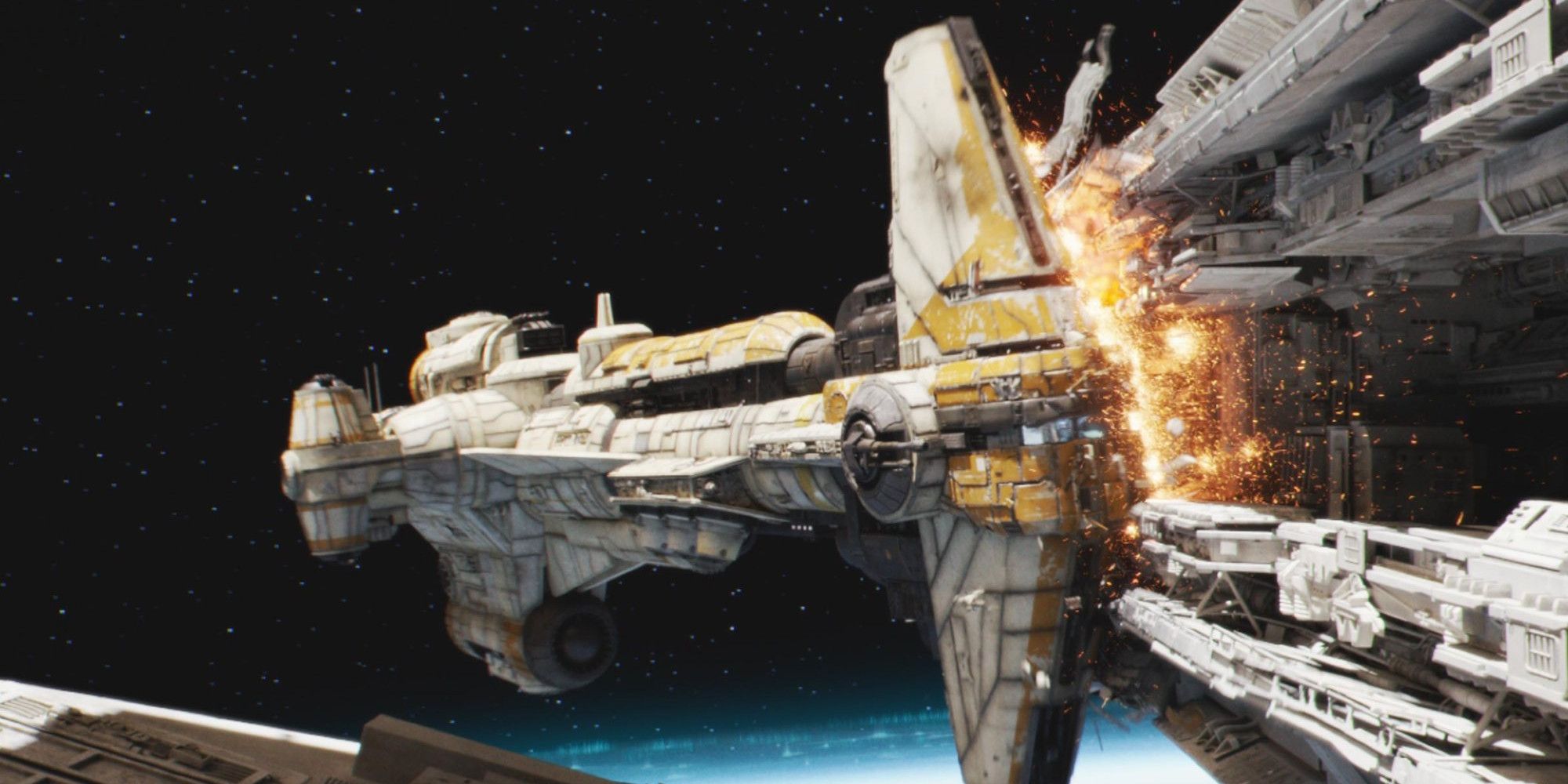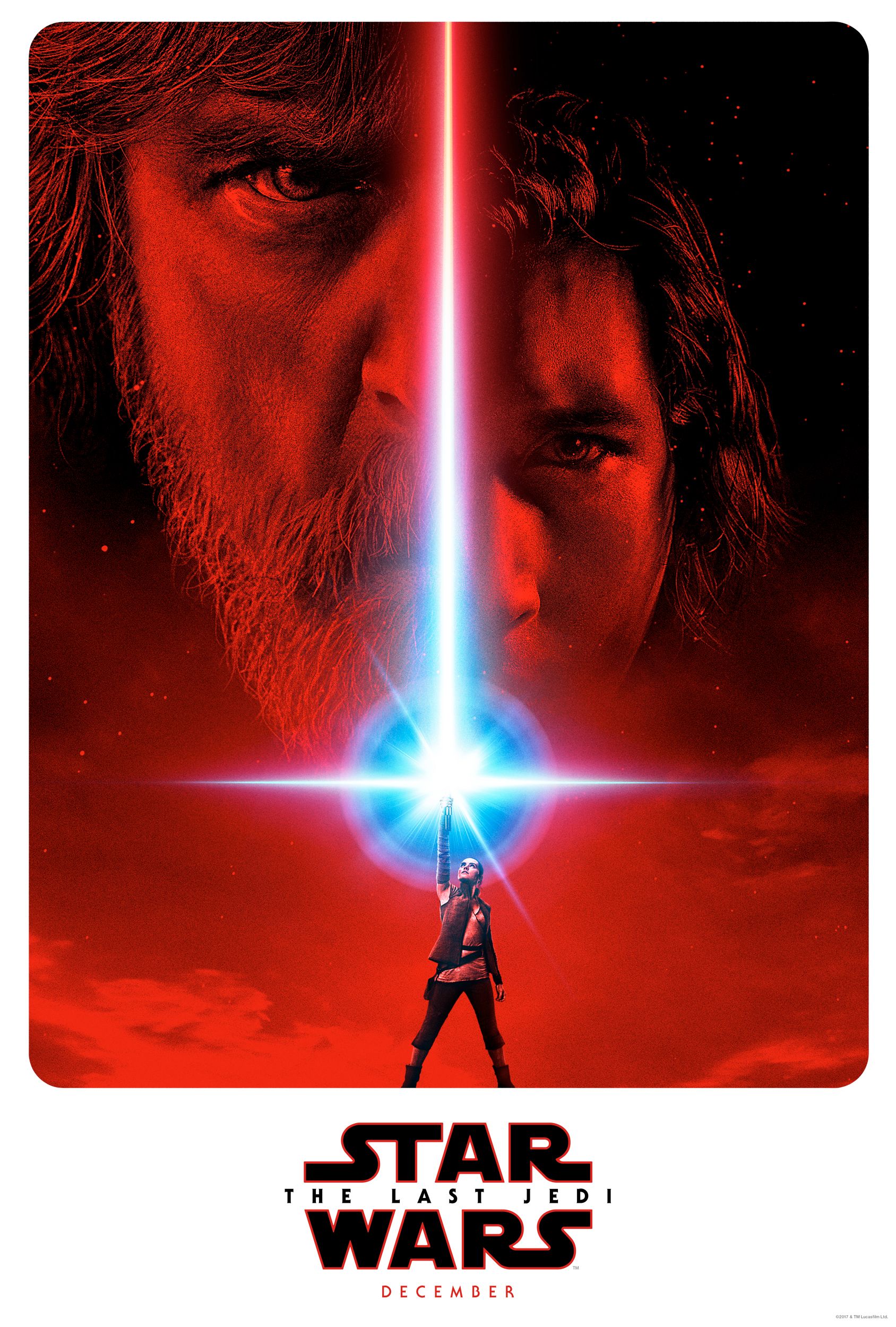The Star Wars universe will never be the same after Rogue One. The first Star Wars spin-off movie brought a lot of new things to the franchise, both visually and with regards to lore and world building. Repeat viewings of the movie and interviews with the creators have revealed many details that may not have been immediately apparent to audiences, but one of the biggest sources of new reveals about Rogue One is the official Rogue One novelization.
The book follows a basically identical story to the movie, covering the same plot beats, character moments, and dialogue without any major departures, but through the narration, characters’ internal monologue, and additional information included in sections labelled “supplemental data,” the Rogue One novelization has several key reveals about the story and characters or Rogue One and the Star Wars universe as a whole.
Breaking down all the information from the book, here’s 17 Rogue One Secrets Revealed In The Official Novelization.
17. Why the Tantive IV Was Docked on the Profundity during the Battle of Scarif
Rogue One ties into A New Hope almost seamlessly, with the Tantive IV receiving the Death Star plans and fleeing into hyperspace complete with a young Leia cameo. This scene is another that has drawn criticism from many, who wonder what Leia and the Tantive IV were doing aboard the Mon Calamari Cruiser Profundity during the battle of Scarif in the first place.
A closer look at the opening crawl and Vader’s dialogue in A New Hope suggests that Leia was present at the battle when rebel spies beamed the Death Star plans, so it’s in no way a continuity error that she’s there, but the novelization spells out why they were there as well as why the Tantive IV wasn’t a part of the battle.
Bail Organa has a brief conversation with Mon Mothma where they agree to send Leia to retrieve Obi-Wan (as is shown in the movie), so the Princess is preparing for that mission. The Tantive IV needs repairs first, so it docks with the Profundity. Since the Rebel fleet has to rush off to Scarif, the ship remains docked with the Mon Calamari cruiser until they need to flee into hyperspace to escape Vader’s brutal assault.
16. Galen Erso the Farmer
The opening of Rogue One takes us to the Erso farm on the green foggy planet of Lah’mu. Fans who read the prequel novel Catalyst know that the Ersos are hiding from the Empire - specifically from Orsen Krennic - because Galen doesn’t want to aid the Empire in building a superweapon, but audiences without that background are left to simply infer those details from the dialogue between Galen and Orsen Krennic.
The Rogue One novelization harkens back to the ending of Catalyst to fill in the details of the Ersos’ life on Lah’mu. The story even continues in a way that makes the movie novelization feel almost like a natural sequel Catalyst, giving a loose account of the intervening years since the Erso family went into hiding on Lah’mu. Galen hasn’t given up his scientific pursuits entirely, but he’s adapted to the life of a farmer, studying vegetation and soil composition instead of kyber crystals.
15. More Lyra Erso
Lyra’s presence in Rogue One is brief, both on screen and in the book. She’s given only a short moment to share some final words with Jyn before she marches to her death at the hands of Krennic’s death troopers. The novel plays out in basically the same fashion, but the book’s medium helps provide some more details to her brief moments in the story.
The Erso’s time working with Krennic before going into hiding, as detailed in Catalyst, was far harder on Lyra than Orsen. Her faith in the Force and devotion to the Jedi, despite not being Force sensitive, made Galen’s work with kyber crystals bothersome. Her distrust of Krennic only compounded things. Galen, meanwhile, was so oblivious and absorbed in his work that she even considered taking Jyn and abandoning him.
The novelization doesn’t prolong her death, but her impact on the story is more significant. We learn that she is at peace in the family’s exile, and that she started smiling again the day they fled Krennic. Obviously she doesn’t want to go back to how things were, so she makes an all or nothing play for Krennic’s life, losing her own in the process.
14. When Galen Decides to Sabotage the Death Star
Many of the differences between the Rogue One movie and book can be attributed to the constraints of filmmaking. Most of the differences come in the form of inner monologues, narration, and other details, but one moment that is in the book, but entirely absent in the movie, is a conversation aboard Krennic’s shuttle immediately after Lyra’s death.
Galen is obviously distraught over Lyra’s death and the potential imminent danger to Jyn, but Krennic seems mostly unaffected. Killing Lyra probably even gave him a great sense of satisfaction since she is largely the reason the Death Star had been delayed so long in the first place. He briefly expresses sympathy, claiming he intended for the family to live in comfort as Galen continued his research before eagerly detailing plans to get back to work with Galen. This is the exact moment that Galen decides to pretend to cooperate with Krennic. A notoriously bad liar, Galen steeled his resolve to get his revenge by sabotaging Krennic’s project, making Lyra’s sacrifice the first of many to stop the Imperial superweapon.
13. Rebel Intelligence on the Death Star
Several sections of the Rogue One novel are devoted to “supplemental data,” usually in the form of some sort of official Rebel or Imperial documentation such as communications transcripts, intelligence reports, or personal memos. The very first of these sections gives a full catalog of what the Rebellion already knows about the Death Star (which isn’t much).
While the reports themselves conclude that there’s no evidence of a massive Imperial construction project, Mon Mothma and Alliance Intelligence remain unconvinced, possibly because of information gathered by the likes of Saw Gerrera as seen recently in Star Wars Rebels. They’ve been able to gather intelligence suggesting Orsen Krennic and Galen Erso may be part of a project involving planets like Jedha and Eadu, but the nature and scope of the project still eludes them, which is why Cassian Andor is so eager to get in touch with Saw Gerrera at the start of Rogue One.
12. Half of Rebel Foot Soldiers Are Former Imperials
Many big name Rebels have a history of service in the Empire prior to defecting to the Alliance. Biggs Darklighter is a popular example. The old radio drama for A New Hope (which isn’t entirely canon anymore) even had a side plot about his defection.Luke Skywalker himself also intended to attend the Academy before he got caught up with R2-D2, C-3PO, and Obi-Wan Kenobi.
This is a trend that has continued into the new canon with characters like Wedge Antilles defecting from Imperial flight school and Imperial Security Bureau Agent Kallus becoming the new Fulcrum in Star Wars Rebels. Cassian Andor is acting as the new Fulcrom and serving as a major recruiter to the Rebel cause, so in the novelization it’s revealed that this is a trend that expands to more than just a handful of characters. In fact, close to half of all Rebel foot soldiers previously served the Empire in some capacity.
11. The Death of Tivek and Cassian's "Terrible Decisions"
Rogue One didn’t wait long to startle audiences with Cassian Andor’s seemingly cold blooded execution of his informant Tivek on the Ring of Kafrene. Characters like Cassian, Saw Gerrera, and General Draven were all used to test the moral lines of the Rebel Alliance. Diego Luna himself even said in an interview with Screen Rant that “ in war sometimes you have to make terrible decisions”
While the movie made the “terrible decisions” Cassian had to make very apparent, the novelization was allowed the time and space to for him to reflect on his actions. He might seem to coldly make decisions to execute someone like Tivek in the movie, but in the book he’s shaken not only by that decision, but other decisions he’s had to make in previous missions. In fact, Cassian’s willingness to do anything necessary to accomplish his mission gives him some emotional baggage that he bears up until his final moments in the novelization.
10. Jyn the Soldier for Saw Gerrera
Cassian isn’t the only one with more emotional baggage in the novelization. In the movie it appears as if Jyn Erso's primary struggle is related to her independence and her loss of hope. It’s mentioned that she was raised by Saw Gerrera and was one of his best soldiers, but the true impact of that upbringing is made way more clear through her internal monologue and the narration of the novelization.
As a part of Saw’s Rebel cell, Jyn committed - and was subjected to - many acts of extreme violece. She was trained in combat, survival, burglery, and many other other skills, so whenever she utilizes one of those throughout the novelization (which is fairly frequent), she’s reminded of her bloody past as a soldier for Saw. Like Cassian, Jyn isn’t only looking for hope, but for redemption and a way to justify for herself all the violence she instigated. This is understandably a bit too nuanced and complex to cram into a movie without large amounts of exposition or a jarring change of pace, but it’s also a fairly significant element of the character that unfortunately doesn’t survive the transposition to live action.
9. "The Planet Killer" Was Believed to be a Conspiracy Theory
Star Wars movies have always been told mostly from the perspective of characters who are in the know. Palpatine’s villainy is blatant if not upfront in every episodic movie, because he’s fairly central to the plot, but Rogue One provides a slightly new look at Imperial rule from the perspective of everyday citizens of the galaxy and foot soldiers of the Rebel Alliance.
While the Rebellion stood against the encroachment of the Empire, not all the freedom fighters saw Palpatine the same way. They all agreed that he was bad, but many saw him merely as a corrupt politician, labelling those that thought he was anything more sinister behind the scenes as conspiracy theorists.
So, while rumors of the Death Star, called “ the planet killer” weren’t entirely unheard of, they were quickly dismissed by many, believing it to simply a hoax “thought up by people that saw emperor as a wrathful deity instead of a corrupt tyrant.”
8. Politics at the Forefront
The Star Wars prequels might catch flack for their focus on galactic politics and senate hearings, but Star Wars has always had a strong political bent. The big difference between the politics of the prequels and the original trilogy is just that the original trilogy just hints at the political circumstances through bits of seemingly throwaway dialogue. Rogue One takes a page out of that playbook.
The more vague approach to outlining the political motivations and machinations of Rebel leadership in Rogue One means that it might take repeat viewings to pick out all the details as most of that information is bundled into a few brief comments and vague asides, but the novelization puts the political situation at the forefront.
The Rebels are fighting hard in battle, but Mon Mothma is still working with sympathetic senators to find non-violent resolutions, too. In fact, the reason Mon Mothma wants Galen Erso captured is so he can testify in front of the Imperial Senate to galvanize support for the Rebellion. Unfortunately, that’s not exactly how things played out. Just watch the Imperial Council scene in A New Hope to see the results of that effort.
7. More Tarkin/Krennic History and Rivalry.
One of the biggest surprises of Rogue One was the level of involvement by Peter Cushing’s CGI resurrected Grand Moff Tarkin. The lead up to the film had Orsen Krennic propped up as the major villain, but - while he was still a major antagonist - it could be argued that Tarkin is the real villain of Rogue One.
Tarkin and Krennic have a rivalry that dates back to the pages of the Catalyst tie-in novel. That rivalry clearly extends to Rogue One as well, but the true extent is even more apparent through the novelization. From Krennic’s inner monologue to snarky message exchanges detailed during “supplemental data” sections, Krennic and Tarkin are engaged in what amounts to the worst battle of office politics ever. A battle that ends when Tarkin shoots Krennic with the very Death Star he constructed. Keep that in mind next time you think of firing off a sarcastic email to a coworker.
6. Pilgrims of Jedha
Like every Star Wars movie, Rogue One is packed with interesting background characters just screaming for their own story. This is especially true in Jedha. Jedha is packed full of (mostly) new faces and strange beings, including various groups of pilgrims in robes or other adornments.
Jedha’s spiritual importance is fairly obvious in the movie with shots of massive fallen statues of Jedi and apparent stock of kyber crystals being harvested be the Empire, but the details of Jedha’s religious significance is left mostly to visual inference.
The novelization provides more information on these pilgrims through a piece of supplemental throus a fragment of a document called “Faith and the Force of Others” from the archives of “the Order of the Esoteric Pulsar.” The document reveals that the pilgrims aren’t all of the same religious sect, as Jedha is “a nexus for faith, life, and the Force of Others in all their forms.”
Because of this significance, pilgrims of a hundred different faiths from just as many systems across the galaxy come to Jedha, showing it’s not just the Jedi and the Guardians of the Whills that revere the Force or kyber crystals.
5. Why Krennic Goes to Mustafar
One of the notable ways Rogue One diverged from other Star Wars movies was by labelling most of the planets and locations as we followed events of the story around the galaxy. One notable exclusion, though, was when Krennic goes to see Vader. It’s not specified in the movie, but most people assumed the lava planet that houses Vader’s castle was the same place where Anakin Skywalker “died” - Mustafar. This is outright confirmed in the novelization.
The other bit of confusion in the movie was why Krennic goes to see Vader at all. The scene is unexpected and doesn’t immediately seem to fit, but that’s another area clarified by the novelization. In a short time span, Krennic has all but obliterated Jedha with the Death Star, and been present during the Rebel’s attack on Eadu, so Vader summons him to account for the attention he's drawing upon the Death Star project.
Ironically, Krennic (unaware that Vader is a Sith Lord) thinks his schemes might give him an edge over Vader, musing to himself that “If a senator from Naboo could leash Vader” then he could as well. That thought is quickly abandoned when Vader instructs him not to choke on his aspirations.
4. Galen Erso Was a Passive Aggressive E-Mail Pro
Galen Erso might have admitted in his holo-recording to Saw Gerrera that he had planted a weakness aboard the Death Star, but the movie doesn’t cover much else. Obviously it doesn’t need to. The ins and outs of how he designed the reactor that way and why such a flaw can bring down the station is glossed over, because only the nitpickiest of fans would care about such things, and movies can only be so long.
Fortunately for those nit-picky fans, the novelization includes a full log of communications back and forth between Galen and the Death Star's Engineering Operations Manager revealing that Galen is the king of passive aggressive email and reverse psychology. In order to support faster superlaser recharge rates, the reactor needs a better way to prevent particle buildup. Galen proposes 3 solutions, including development of 2 new technologies or using venting shafts. When Krennic is presented with the options, he replies that “New research and technological development is out of the question at this juncture,” requesting a proposal for the use of thermal exhaust ports. The rest is history.
3. Way More Admiral Raddus
In addition to a few Rebel characters brought back from the original trilogy, Rogue One introduces a few new high ranking Rebels, including the Mon Calamari Admiral Raddus. Raddus represents the second major Mon Calamari admiral to command the Rebel fleet after Admiral Ackbar was introduced in Return of the Jedi. The big Mon Calamari cruisers and their crew have a notable presence in the Rebel fleet, and the Rogue One novelization explains why.
Mon Cala was one of the early planets occupied by the Empire. Their underwater civilization lived in airtight city structures that also, unbeknownst the the Empire, happened to be space worthy. When the Empire attacks, many of these city ships flee, and Raddus helps lead an effort to convert their former homes and civic buildings from what Mon Mothma refers to as “a pirate armada” into full blown capital ships able to go up against the might of the Empire.
2. The Guardians of the Whills
The “Whills” are one of the oldest elements of Star Wars lore, appearing in many of George Lucas’s first drafts as a sort of precursor to what is now the Force. The novelization for The Force Awakens included an excerpt from the Journal of the Whills, marking the first time they receive any mention in current canon, but Rogue One goes even further by introducing Baze Malbus and Chirrut Imwe as Guardians of the Whills, taking the concept to the big screen for the first time.
The movie alludes to the Guardians and their role in the galaxy, but once again, it’s pretty vaguely defined compared to what’s in the novelization. The Guardians of the Whills are not directly affiliated with the Jedi. They may have aligned in their view of the Force in many ways, but they are their own thing, separate from the Jedi Order. Their role on Jedha was to guard the Temple of the Kyber.
The book also provides a prayer of the Guardians of the Whills:
In darkness, cold.
In light, cold.
The old sun brings no heat.
But there is heat in breath and life.
In life, there is the Force.
In the Force, there is life.
And the Force is eternal.
1. The Last Flight of the Lightmaker
During the climax of Rogue One, Admiral Raddus calls in a Hammerhead Corvette to ram a disabled Star Destroyer into the shield gate over Jedha, enabling the Death Star plans to get beamed to the Profundity, ultimately enabling Luke Skywalker to destroy the Death Star at the end of A New Hope.
That moment plays out a little differently in the novelization. The Hammerhead called Lightmaker is the ship that volunteers for the task. Most of the crew is evacuated, but it’s captain, Kado Oquoné, stays aboard with a skeleton crew to ensure success, knowing it’s almost certainly a suicide run.
In Return of the Jedi, Admiral Ackbar is shown somberly bowing his head after an A-Wing pilot crashed into the bridge of the Executor to bring down the massive Super Star Destroyer. Rogue One doesn’t have time to show Raddus mourn the crew of the Lightmaker, but the novel takes time away to recognize this sacrifice, and Raddus silently pledges to name his great-grandchildren after the crew of the Lightmaker.
---
Did you read the official novelization of Rogue One? How did you think it compared to the movie? Let us hear about it in the comments!

